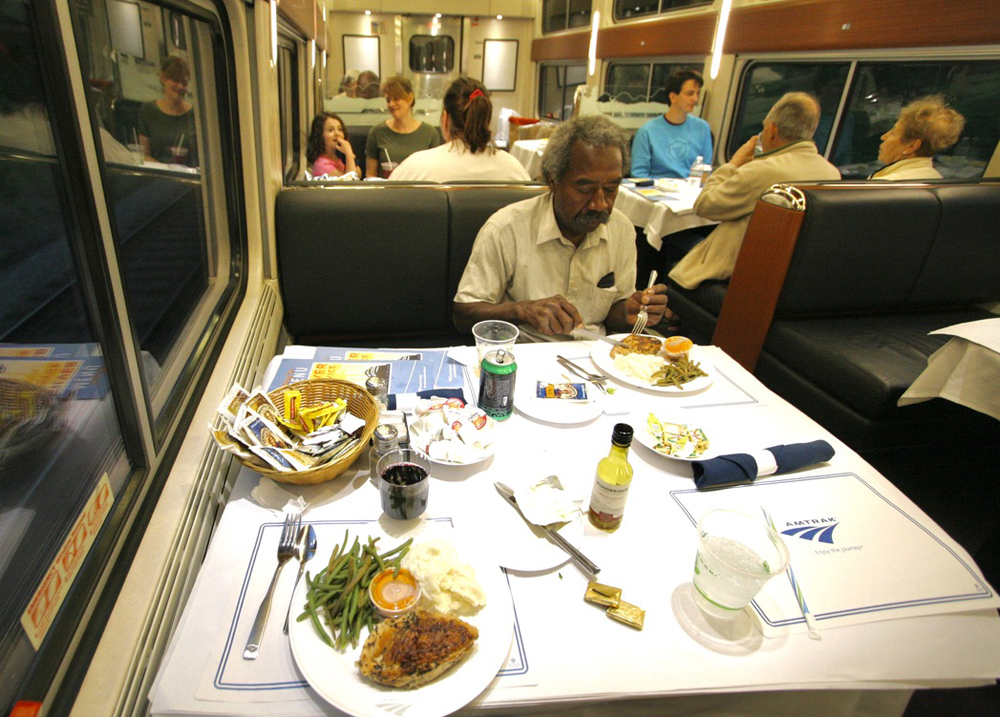
WASHINGTON — A group evaluating Amtrak food and beverage service says improving service will hinge on first fixing “systems … behind the scenes” that impact that service nationwide.
The Food and Beverage Working Group was created by Congress as part of 2021’s Bipartisan Infrastructure Law to evaluate the onboard food and beverage operation, a key component of Amtrak amenities. Its statement that “delivering consistently good service is not achievable without first fixing the systems that are in play behind the scenes” is part of a two-page summary issued Friday by the Rail Passengers Association, which helped organize the effort. The group delivered its full 96-page port to Congress last week, but Amtrak had not authorized its public release as of Friday.
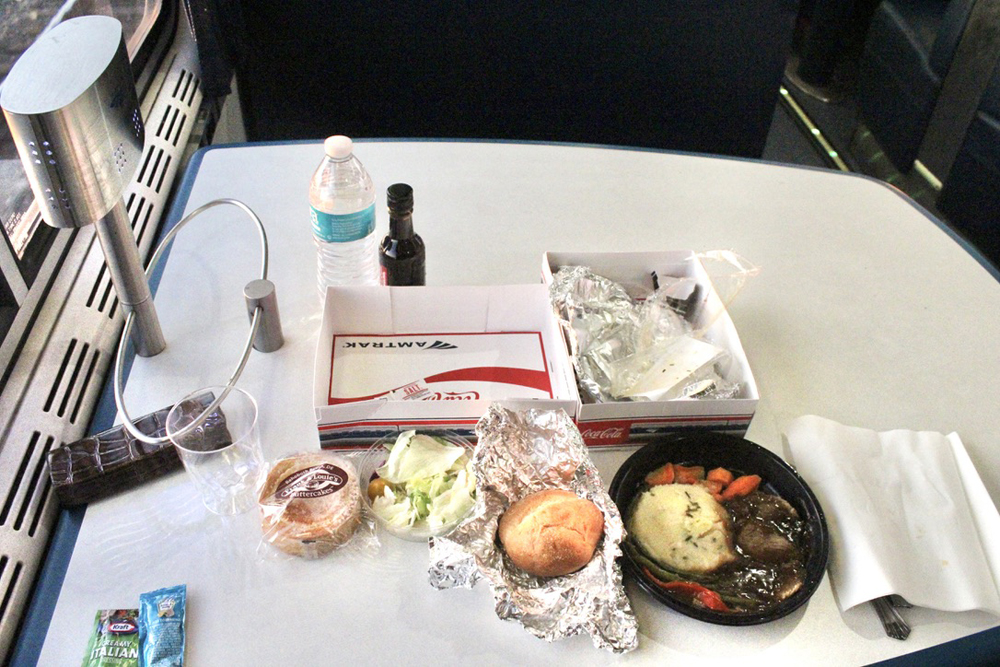
The working group’s 15 members are comprised of Amtrak front-line employees and management, international travel and hospitality experts, and partners from state-supported services. Madison Ned Butler, RPA’s communications manager, says group members came up with more than 30 recommendations to improve onboard service. After examining examined studies, research, and suggestions from travelers, they made recommendations for each Amtrak operating unit that won’t surprise regular passengers:
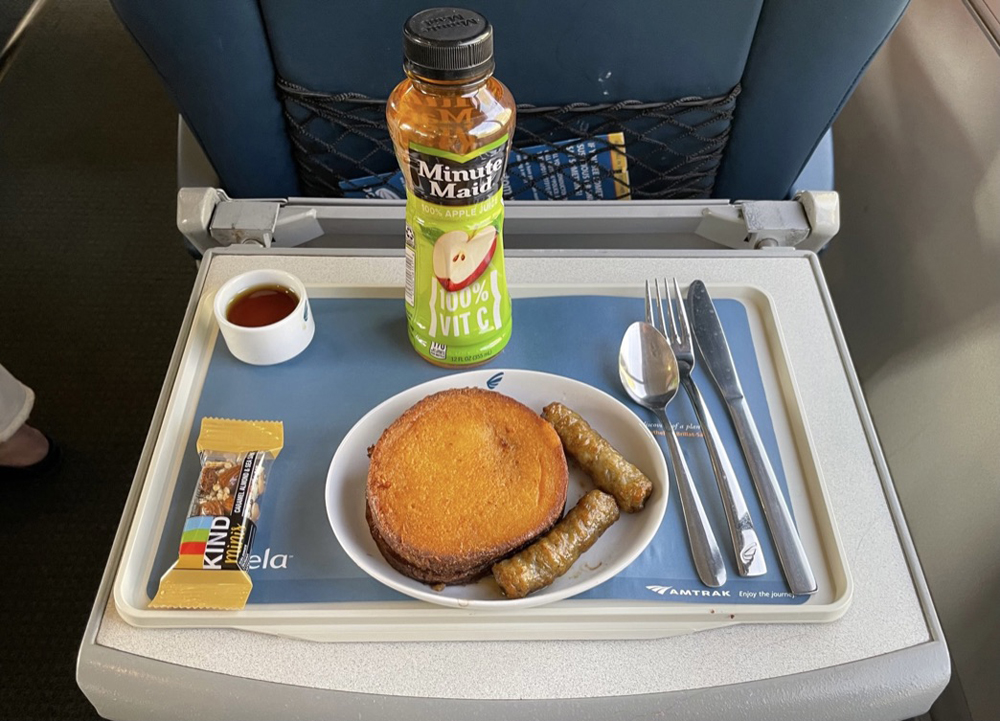
Long-distance: Open dining cars on all trains for all passengers regardless of ticketed class. Coach passengers have only recently been permitted to buy traditional meals on the five western trains with table service. The Silver Star and Auto Train offer traditional meals that aren’t available to coach passengers; elsewhere, so-called “flexible” dining meals-in-a-bowl are furnished only to sleeping car patrons. Management began reducing dining car staff in 2018.
State-supported routes: Localize stocking of product and expand quality control efforts. Some routes, such as the Downeaster and Cascades, enhance offerings with local favorites.
Northeast Corridor: Revitalize the standard of excellence for Acela and Acela First Class. Recent Acela menus have been considerably less imaginative and of lower quality than when celebrity chefs helped create selections.
“We found that service delivery and supervision models have to be established,” Butler tells News Wire. Three smaller teams focused on the current situation, best practices, and future initiatives.
On the Rail Passengers Association website, Butler writes, “Now that the report is filed, Amtrak has 180 days to respond.” The report, Butler says, “isn’t about bringing back linens and dining trends from the 1900s. It’s a map for how to move forward [and] a guidebook for changing the culture and creating sustainable buildable practices that reflect the desires of passengers of all ages.”
Trains News Wire plans to examine the full report in more detail when it becomes available.






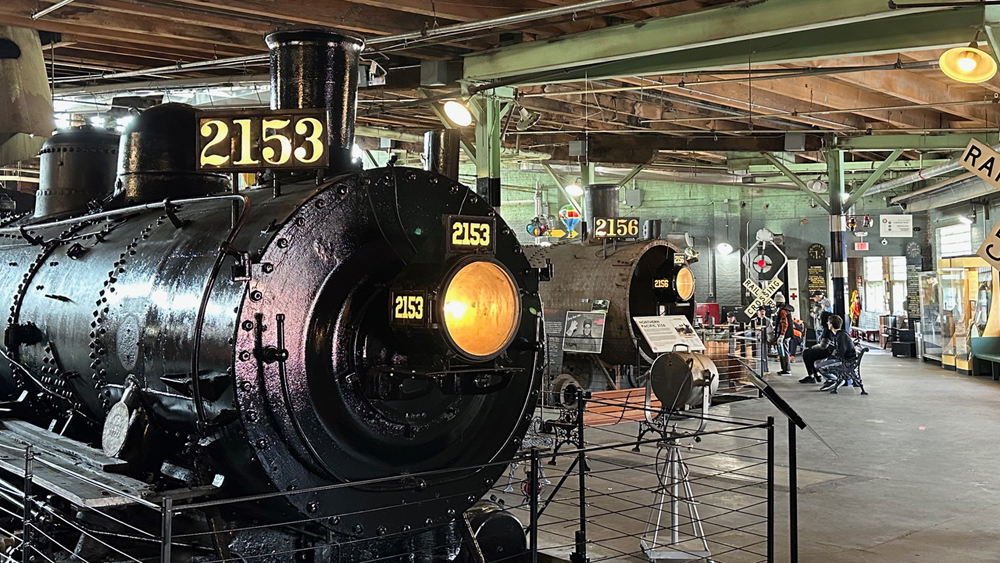
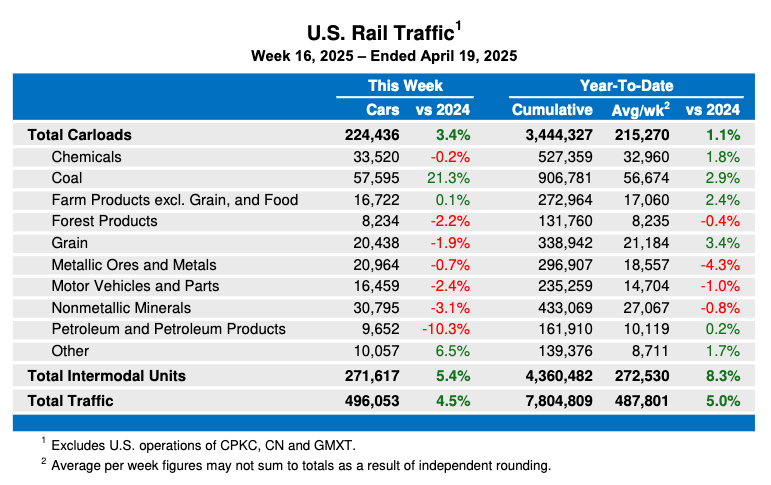

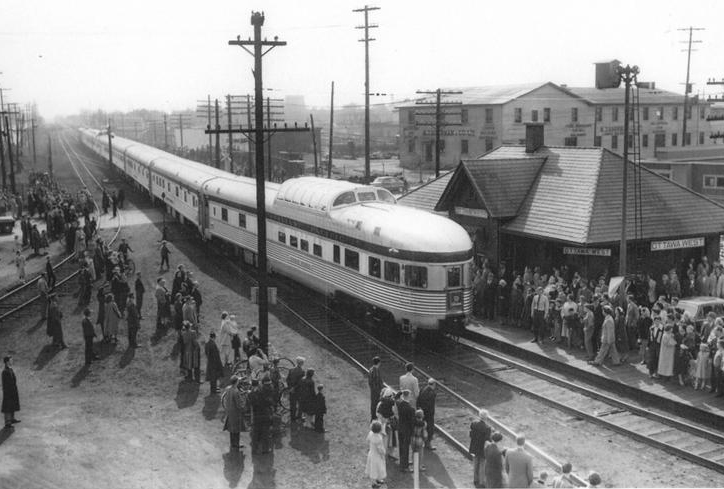




Great plan and idea, but first work on improving service and getting more trains on the line running and getting more people to use the train and then we can work on improving and upgrading the food served on the train.
Joseph C. Markfelder
Quality of the train service must improve, sure, but part of getting people back on board is to have edible food. My spouse and I had a round trip NYP to DC just before COVID, and the nuke burgers and like food didn’t even live up to the cheap stuff in my local supermarket’s freezer section. That’s bad enough, but imagine what, 12 hours on the Adirondack with pretty much nothing edible for adults or their kids? Maybe I can wheel on a cooler, but I can’t carry an oven or microwave oven.
When I was still commuting to Manhattan, I got great breakfasts from a food cart. Sometimes, lunch as well. Onboard food should be at least that good, and if well thought out, NEC and regional trains wouldn’t need a big increase in staff. Plus, Amtrak should look a lot more to local ‘quick’ food suppliers.
If you feed them, they will come…
But it has to be good. It has been proven time and time again, that people will pay extra for food service if it is good and professionally made. Not that slop that Anderson imported from the air lines…
Folks, nothing is going to change until the entire BOD is replaced and a
REALLY TRUE national system is created patterned after, with modifications,
the European systems. And bring back dining car availability to EVERY
passenger regardless of fare level.
And yes, on those trains with substantial Black or Hispanic passengers meal
options, race based, should be added despite protest from the politically correct
elements.
Ah yes, my enjoyable meal experiences on the BROADWAY LTD twin-car
unit, and the TEXAS EAGLE are but a pleasant memory.
Bill Grant
Cols, OH
The NYO&W. Cut itself entirely March 29, 1957 and drastically stopped losing so much money. The Rock Island actually became hugely profitable after 1979 in stock terms within a few years by stopping running. ICC arbitrarily declared the CRI&P “cashless” and did Directed Service in a political move done by Jimmy Carter on behalf of Fred Kroll and his labor union. I could’ve bought RI stock at $4 a share and gotten over $80 a share in liquidation a few years later.
And this has what to do with food service?
You can sell franchised food on the train but you can’t have franchised employees working on the train due to all train personnel have to be trained for emergencies plus the liability aspect of any non RR employees.
This is true Galen. I wasn’t expecting a 17 year old on summer break to work it in this case. It requires a union staffperson.
I will throw it out again. Franchise meal cars.
Set up an RFP and see just how much creativity is available in the marketplace. See what the market can produce. Contract out a food car design that is modular on the inside so that a new operator can take over and refresh the car for its service in 30-45 days.
Sometimes good ideas don’t come from within, but from the outside.
You do need to provide proper safety training though.
Was anyone on that Blue Ribbon Committee (Amtrak front-line employees and management, international travel and hospitality experts, and partners from state-supported services.) involved in the actual preparation and/or eating of Amfood, or is it all theoretical?
That discrimination angle is an interesting angle. I don’t know if it was intentional. But the Eagle and the CONOL both serve large populations of African Americans. Maybe this could be an additional way to prod Amtrak into raising standards on those two trains.
The Capitol Limited and Lake Shore Limited serve more diverse populations, and both are stuck with flex dining. This leads me to believe that there was no intentional discrimination. Regardless, flex dining needs to go. Now!!
I think the “discrimination angle” is not only repulsive, but outrageous. Folks who see everything in the world through the lens of race live joyless lives. (I wonder if I could get the speed limit on my road reduced if I said it was racist to allow all these white guys in pickup trucks to speed by)?
Capital Limited (Washington DC, Chicago) have very large black populations. Traditional dining is on routes that can attract a wealthier clientele usually not black folks. The South is largely left out of better food options.
It is regional discrimination that trains like the City of New Orleans that passes through three African American dominated cities are offered the inferior microwave meals (Flex Dining) while West Coat trains are given cooked to order meals (Traditional dining).
Rail Passengers Association’s first priority should be getting Amtrak to offer traditional cooked to order meals on all long distance trains. We are all American’s and some regions should not be offered a better government funded service than others. All too often it us black residents living in major cities in the South that are offered this blatantly inferior service.
Good luck with that. The current Board and management at Amtrak with their cost cutting mentality will just ignore the report. They both need to be replaced with people who believe creating revenue is more important than just cut cut cut.
Show me a transportation company — or any service company — that ever cut its way to prosperity.
The NYO&W. Cut itself entirely March 29, 1957 and drastically stopped losing so much money. The Rock Island actually became hugely profitable after 1979 in stock terms within a few years by stopping running. ICC arbitrarily declared the CRI&P “cashless” and did Directed Service in a political move done by Jimmy Carter on behalf of Fred Kroll and his labor union. I could’ve bought RI stock at $4 a share and gotten over $80 a share in liquidation a few years later.